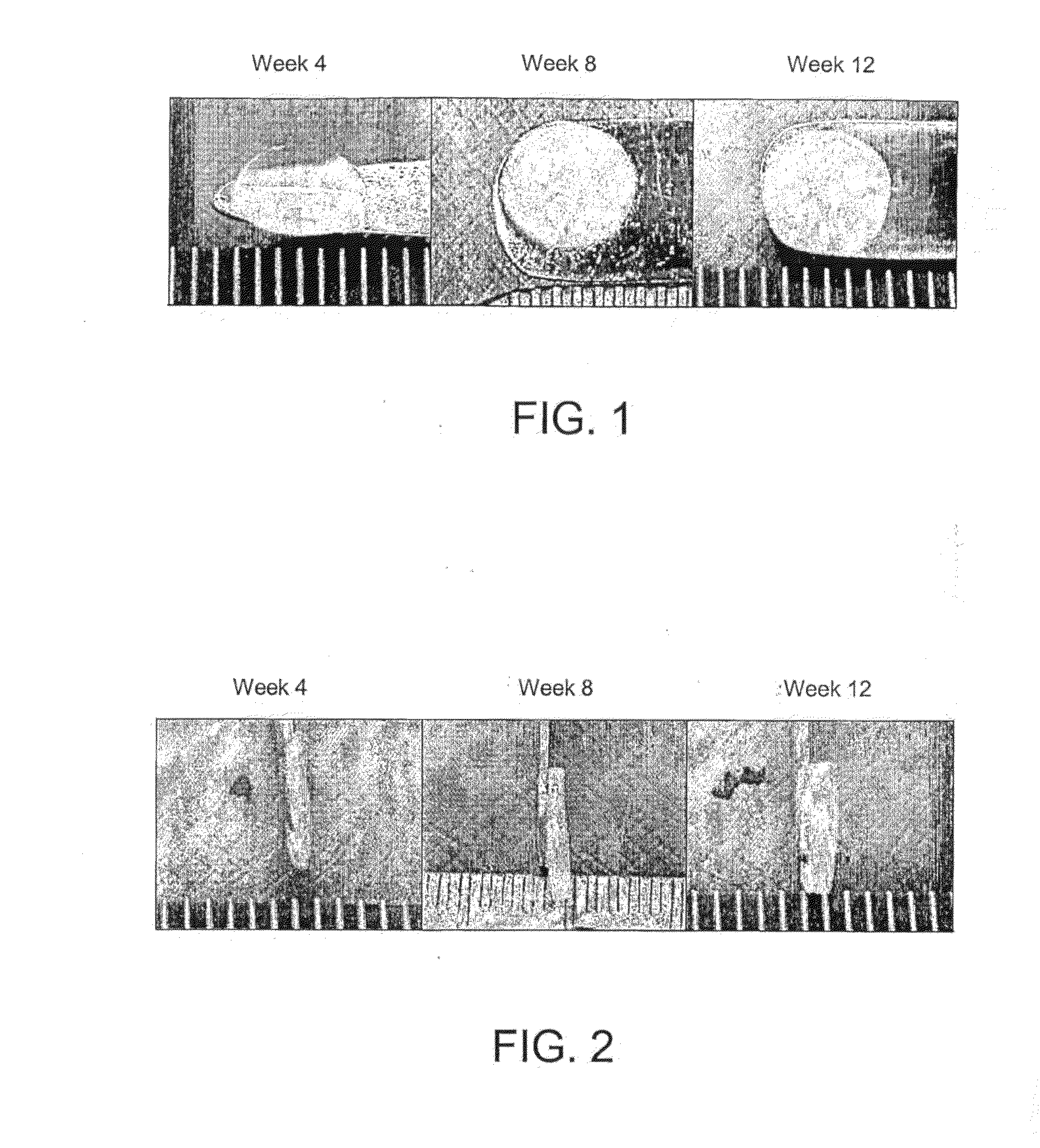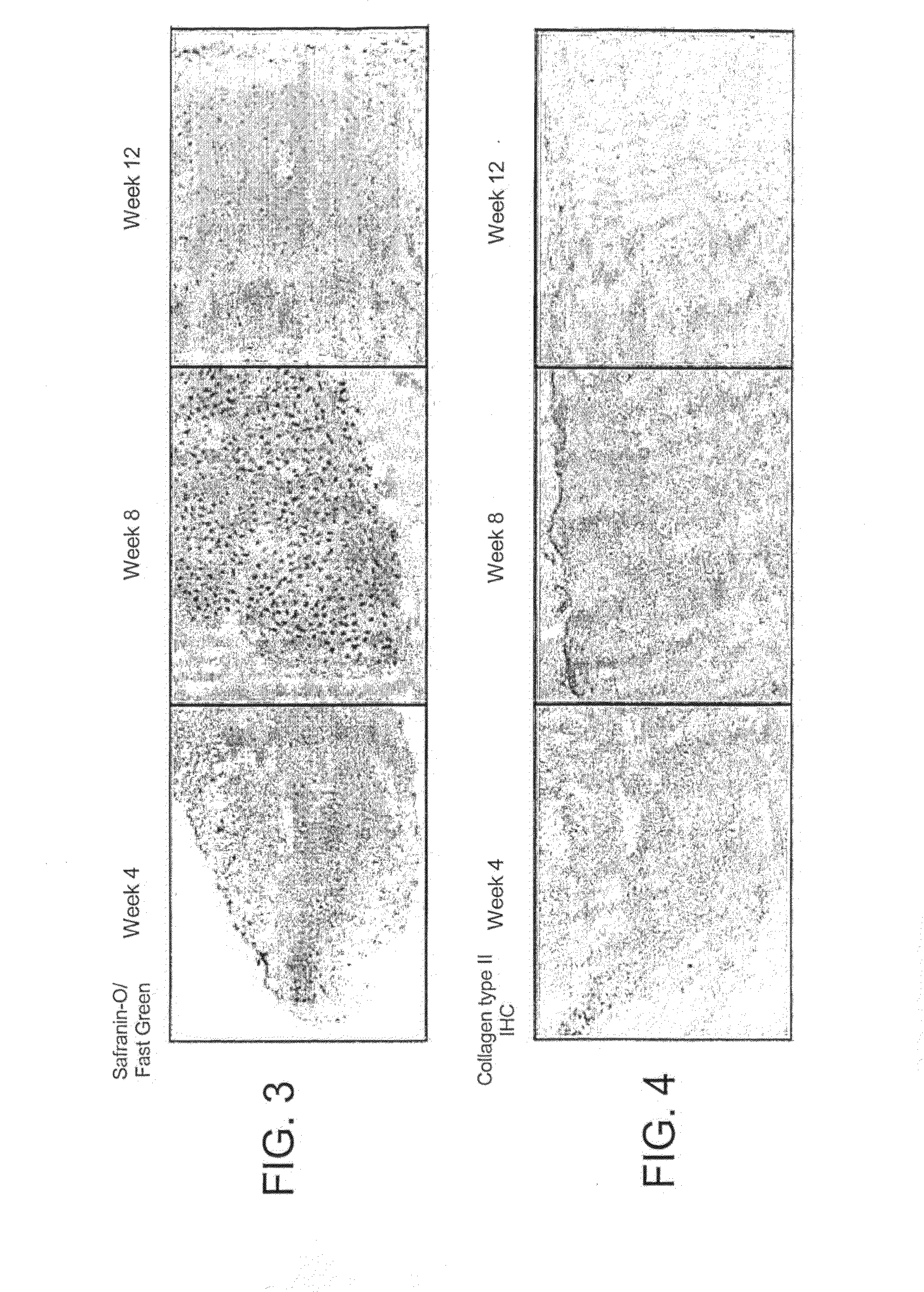Scaffoldless Constructs for Tissue Engineering of Articular Cartilage
a technology of articular cartilage and scaffolding, which is applied in the field of scaffoldless constructs for tissue engineering of articular cartilage, can solve the problems of not producing the desired extracellular matrix proteins, attaching cells tend to flatten and change to a different phenotype,
- Summary
- Abstract
- Description
- Claims
- Application Information
AI Technical Summary
Problems solved by technology
Method used
Image
Examples
Embodiment Construction
[0014]A new process of making a construct comprising chondrocytes generally includes taking isolated chondrocytes in suspension, allowing the cells to sediment onto one or more coated tissue culture surface, in which the coating comprises a material that is not conducive to cell attachment and which is non-toxic and otherwise suitable for inclusion in a tissue culture environment. The sedimenting cells aggregate and grow into constructs that contain rounded chondrocytes and which contain collagen and glycosaminoglycan throughout. As used herein, a “construct” or “tissue-engineered construct” refers to a three-dimensional mass having length, width and thickness, and which comprises living mammalian tissue produced in vitro. The process of cells aggregating to result in a construct is termed the “Self-Assembling Process.” The new constructs also demonstrate mechanical properties, such as compression modulus, which improve over time in culture. Thus, the process described herein forms ...
PUM
| Property | Measurement | Unit |
|---|---|---|
| surface area | aaaaa | aaaaa |
| area | aaaaa | aaaaa |
| diameter | aaaaa | aaaaa |
Abstract
Description
Claims
Application Information
 Login to View More
Login to View More - R&D
- Intellectual Property
- Life Sciences
- Materials
- Tech Scout
- Unparalleled Data Quality
- Higher Quality Content
- 60% Fewer Hallucinations
Browse by: Latest US Patents, China's latest patents, Technical Efficacy Thesaurus, Application Domain, Technology Topic, Popular Technical Reports.
© 2025 PatSnap. All rights reserved.Legal|Privacy policy|Modern Slavery Act Transparency Statement|Sitemap|About US| Contact US: help@patsnap.com



